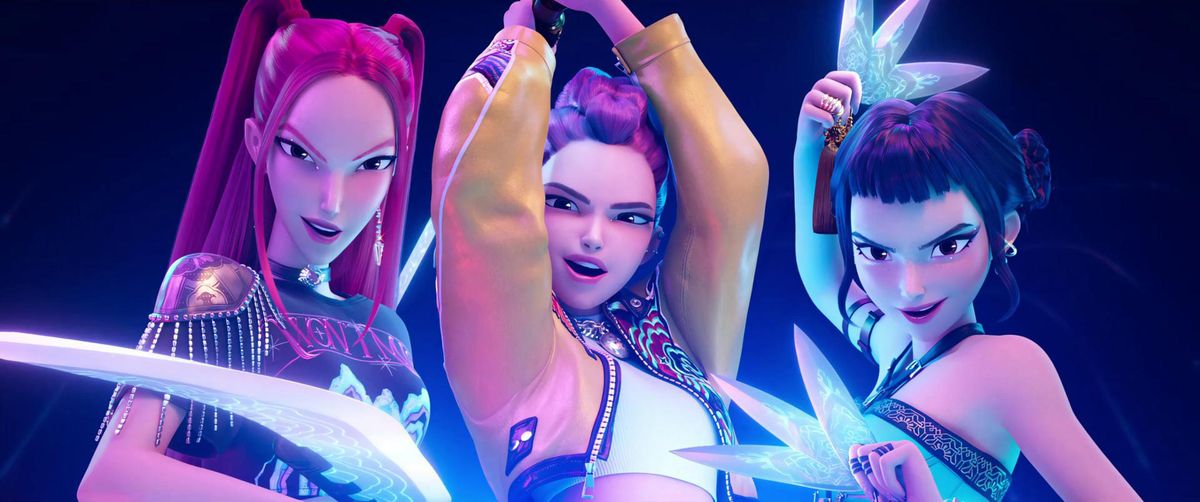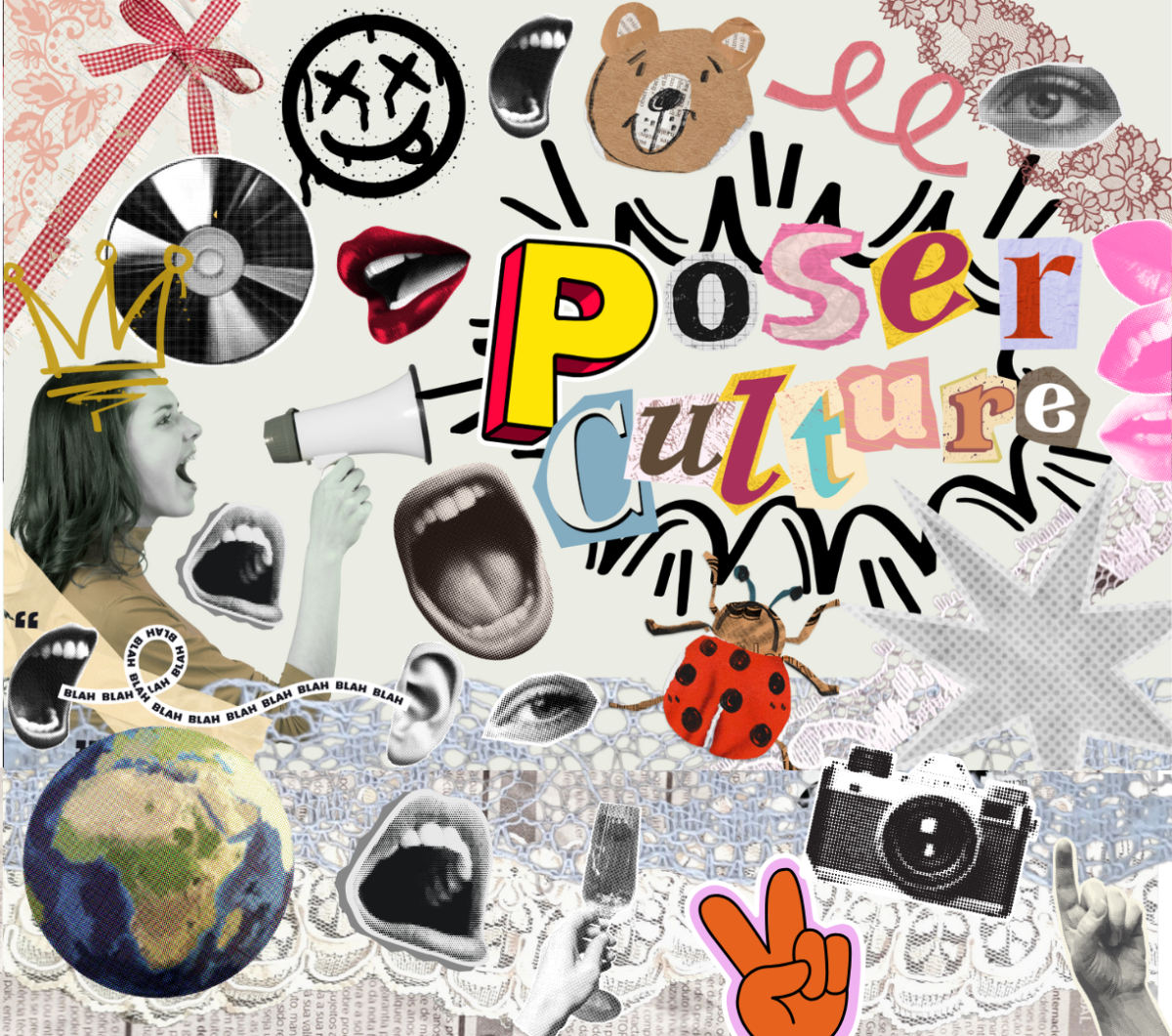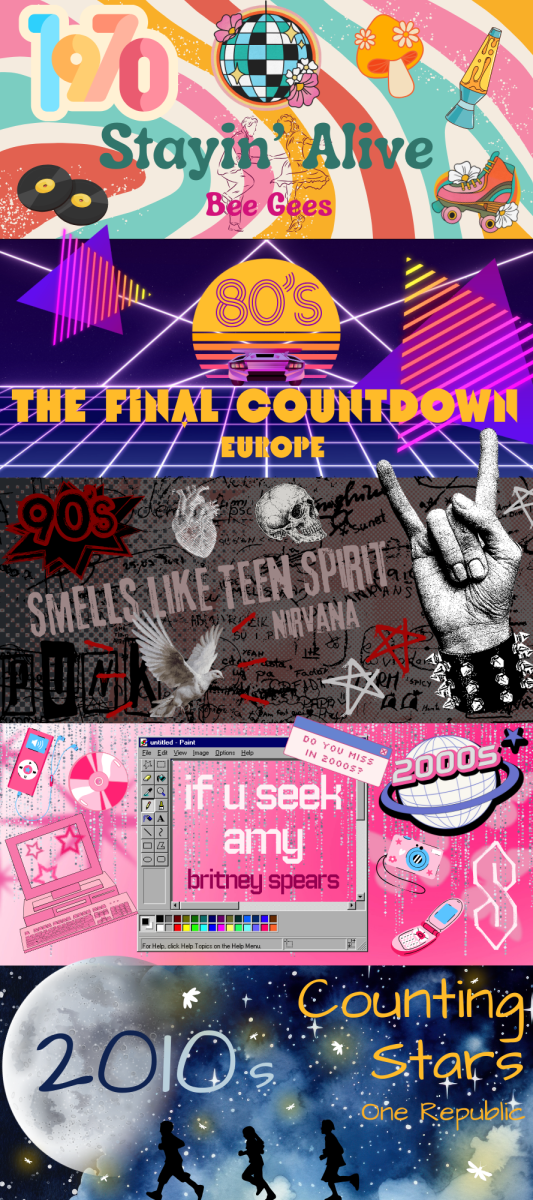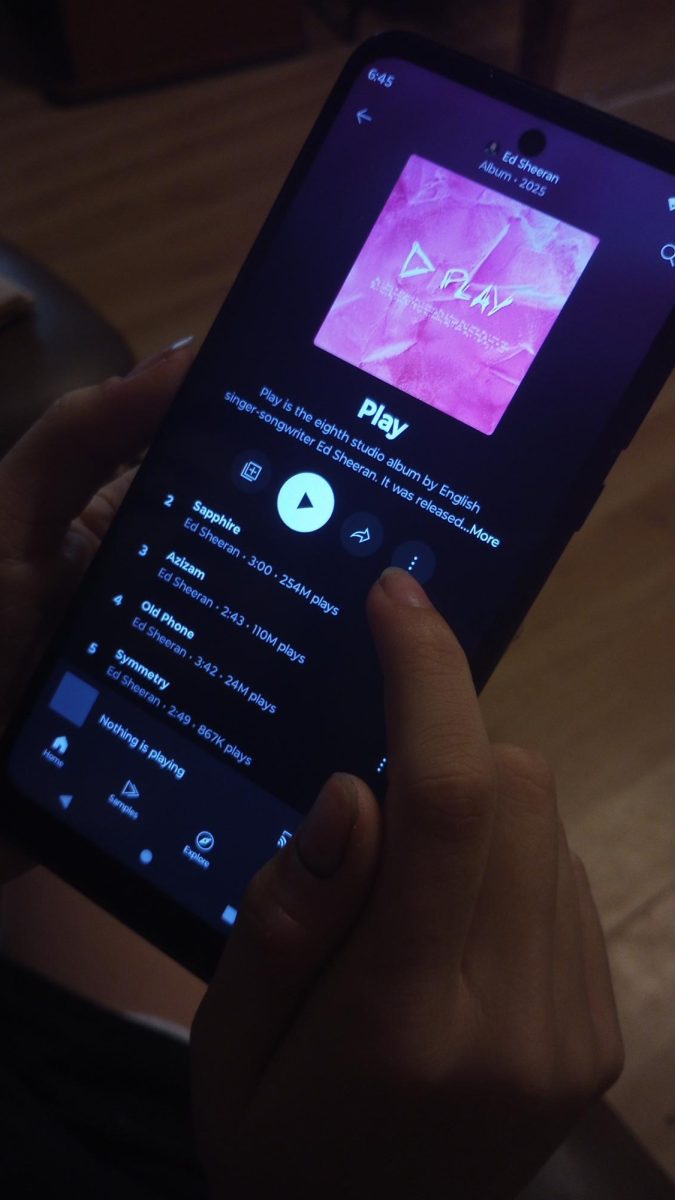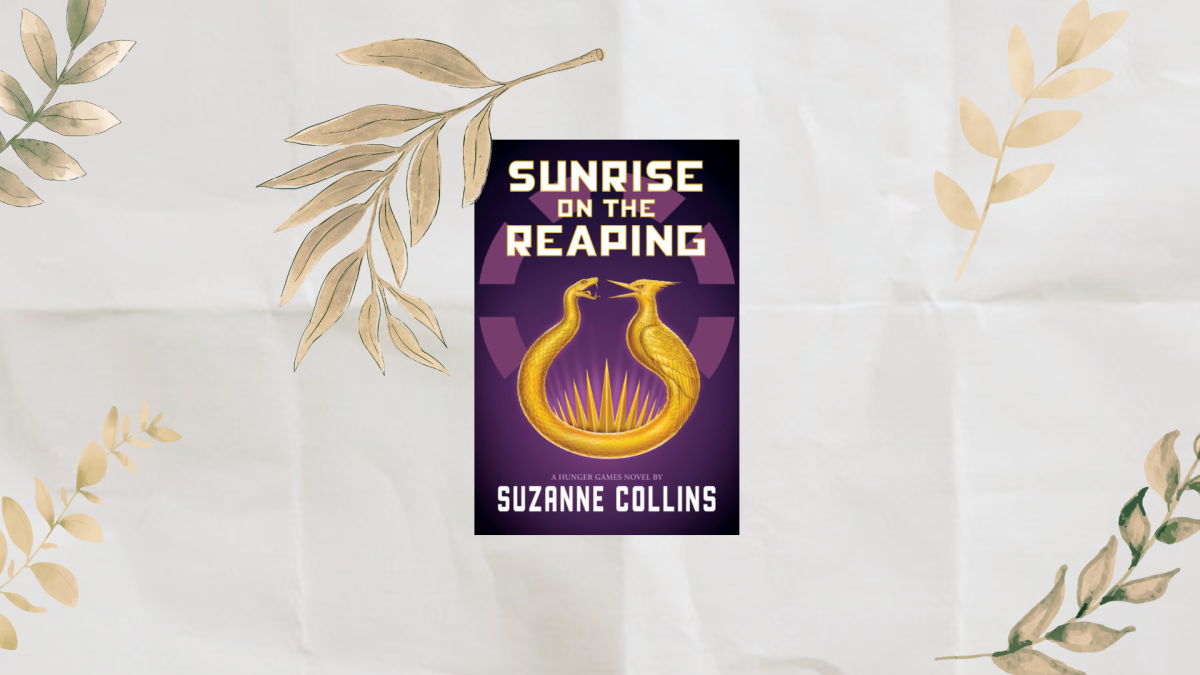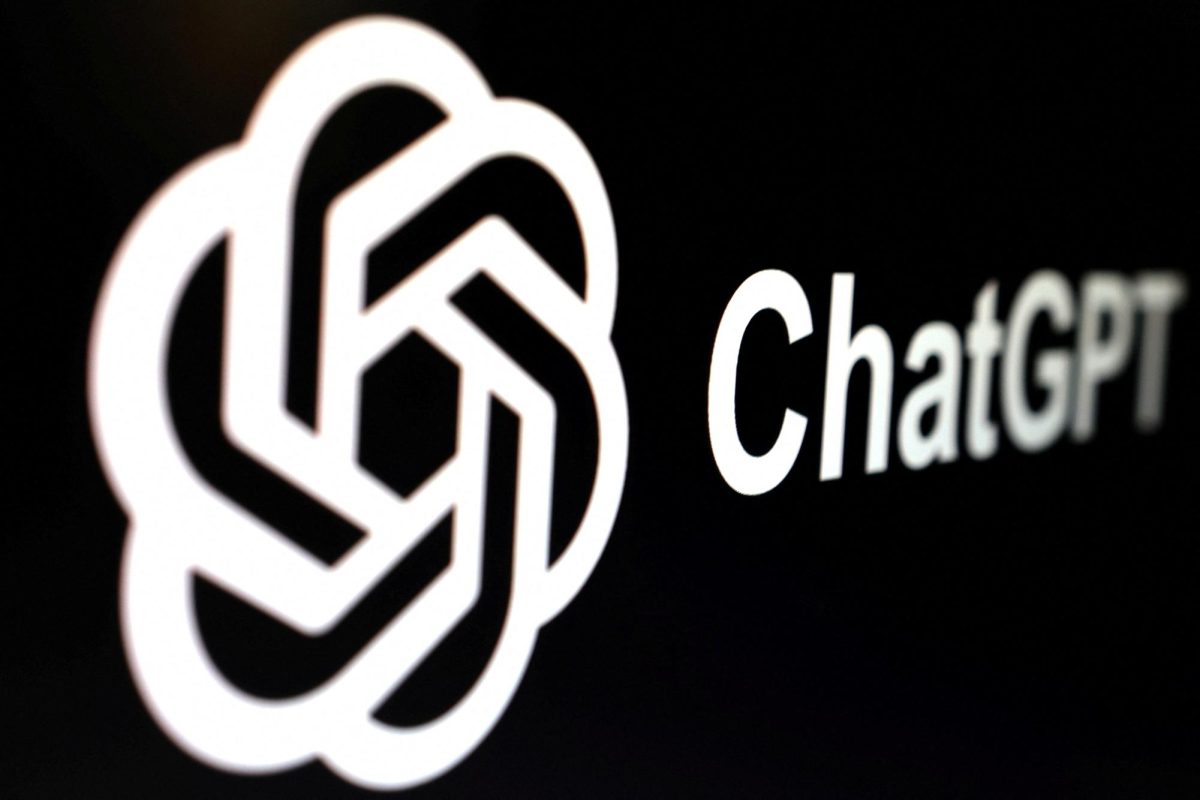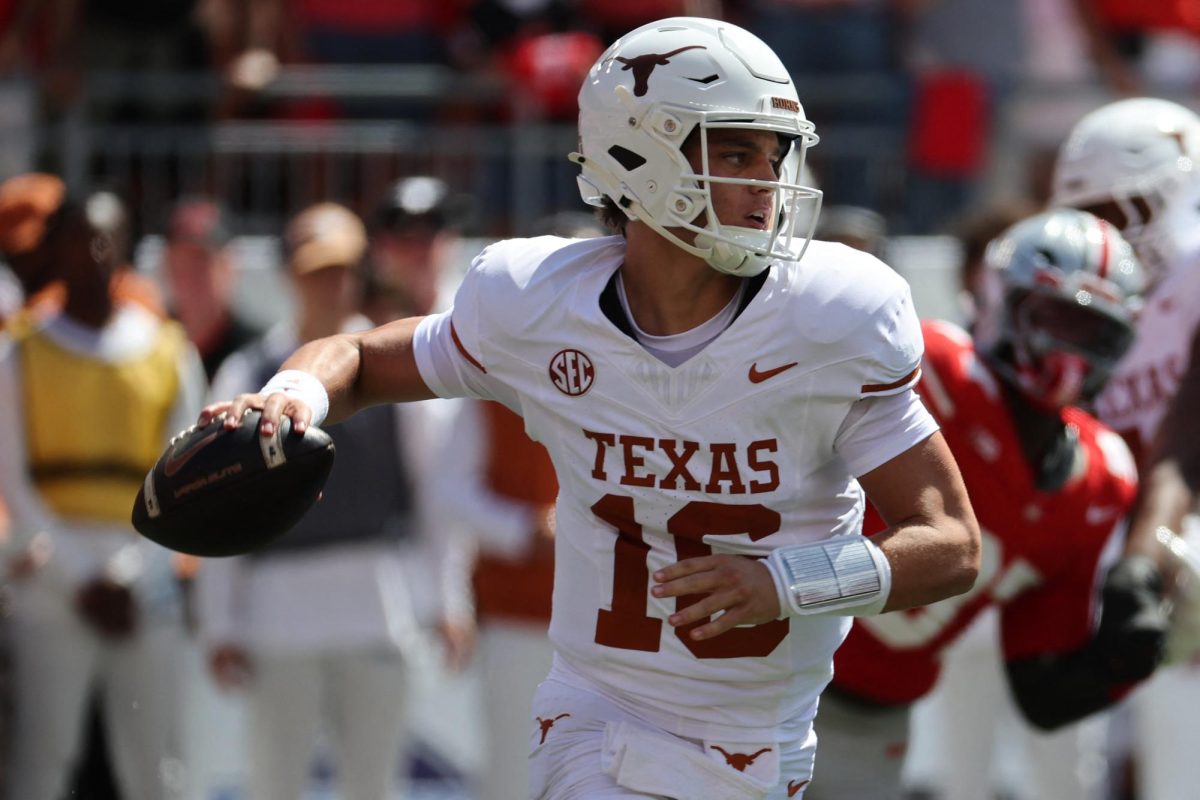I didn’t have high expectations going in, but K-Pop Demon Hunters completely took me by surprise. What starts off feeling like a flashy concept quickly becomes something genuinely exciting. The animation is stunning, the action is sharp, and the music brings the perfect energy to the film. It’s bold, creative, and way more fun than I ever expected.
K-Pop Demon Hunters follows a band named Huntr/x made up of three talented members: Rumi (Arden Cho), Mira (May Hong) and Zoey (Ji-young Yoo). They dominate the stage with dramatic music and impressive choreography while secretly battling demons that threaten the balance between worlds and consume human souls. Their biggest challenge comes when a mysterious, charming, yet demonic boy band called the Saja Boys enters the scene, bringing with them big competition and manipulative ploys. As tensions rise heavily, the girls must rely on their bond, music and trust in each other to defend what matters most.
This animated musical urban fantasy film was first released on Netflix on June 20, 2025, where it quickly became a worldwide sensation, landing in the top ten across numerous nations, leading charts and connecting with viewers. Sony first announced the production of this star attraction, co-directed by Maggie Kang and Chris Appelhans, in March of 2021. The movie itself has taken around nine years to make. The extensive effort involved encompasses elements such as initial concept design, story development, pitching and development, music integration and later production (animation).
The comedy, visual aesthetic and messages of the movie are distinctly targeted at a younger audience, but the film has elements that appeal to young adults and families as well. K-Pop Demon Hunters delves into issues of inner conflict, self-acceptance, belonging and the revitalising influence of vulnerability. Characters face their guilt, past wounds and inner demons, literally. The movie employs metaphors such as actual demons to depict inner conflicts as it emphasizes the spiritual and cultural significance of K-pop. The story’s supernatural elements were influenced by Korean mythology and demonic lore. Kang utilized the customs of female Korean shamans, called mudang, who wield music and dance to conduct rituals and repel evil spirits. This resulted in the idea of utilizing music as a weapon against demons.
It also explores problems in the K-pop sector, including the amount of scrutiny and constant expectation on idols, invasion of privacy, parasocial dynamics (the one-sided, emotional connection an individual forms with a media figure) and the continuous replacement of older groups by younger ones. Another huge criticism of the K-pop industry shown in the movie is the stereotyping of idols. This is exhibited perfectly through the Saja Boys as they appeal to the public by playing into those stereotypes.
Not everything is completely comprehensible in the movie, but it’s not the type of film where you scrutinize the specifics. It’s the type of film where you drift seamlessly from one scene to another, lifted by tunes that support the narrative and help propel it forward. K-pop is not something I frequently listen to, or ever at all, really, but this movie expertly put meaning and emotion into almost every song, making it act in accordance with the characters who wrote it, which in turn exceeded listeners’ and my expectations. The vocals are vital to each character’s portrayal. Thankfully, this movie was exceptional at conveying a character’s feelings with remarkable vocal range and delivery from the voice actors.
The songs “Golden” and “Takedown” by Huntr/x encapsulated the different themes of the movie excellently. The way a character sang, did the choreography or overall reacted with a song gave them more depth coherently. Sony did both, but they managed to make the songs sound less like a performance of symbolism and more like a deeper, personal addition to the story, when it’s usually the other way around.
With the animation itself, Sony slowed it down to 12 fps (frames per second), instead of the regular 24 fps a computer has, to give it that 2-D frame-by-frame animation look, only speeding it back up again during certain scenes. This granted better command over smear frames, which helped with exaggeration and tricking the eye. Sony first experimented with it in their Spider-Verse movies and later in the movie The Mitchells vs. the Machines as well. Once they realized that people found the technique captivating and dramatic, they took a similar approach to K-Pop Demon Hunters. I predict after the massive success they had with K-Pop Demon Hunters, they will be using the style a lot more in the future, which is promising considering it’s more distinctive than previous styles that Sony has gotten grief over (e.g. The Emoji Movie, The Smurfs live-action/CGI films, and Surf’s Up 2: WaveMania) and AI has trouble replicating it.
With bright, colorful visuals and plenty of action, this movie keeps you engaged from start to finish. K-Pop Demon Hunters isn’t trying to be anything more than a fun, energetic ride—and honestly, it nails that. The characters are charming, the pace never slows down and the style makes it a joy to watch. If you’re in the mood for something lively and entertaining, it’s definitely worth checking out.

